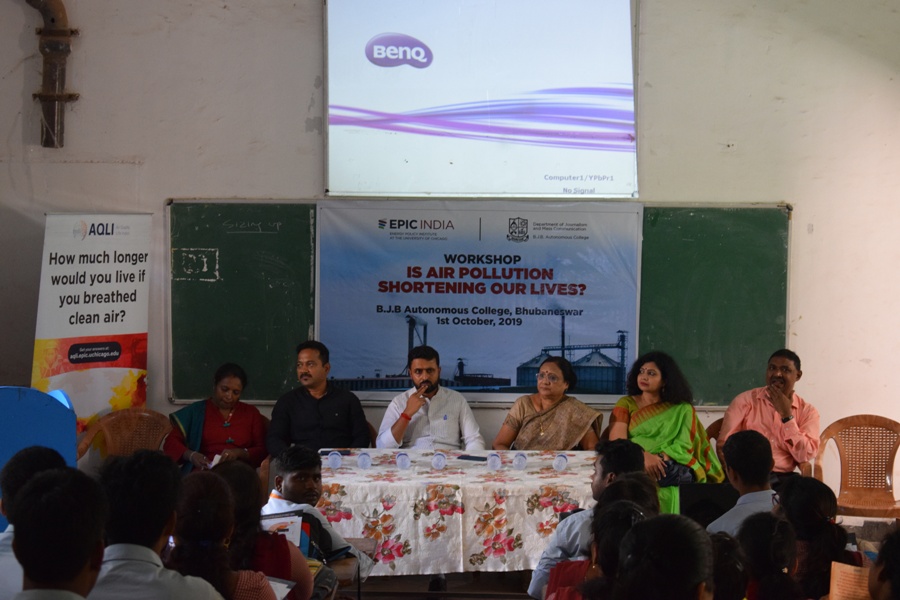Bhubaneswar: Being one of the non-attainment cities with respect to ambient air quality under the National Clean Air Programme, the Capital city’s deteriorating air quality has been a cause for national concern, opined experts at a workshop organised by the Energy Policy Institute, University of Chicago (EPIC-India), at BJB Autonomous College here Tuesday.
The experts cited the Air Quality Life Index (AQLI) of the Chicago-based institute to claim that the residents of Bhubaneswar could live about 2.7 years longer if World Health Organisation (WHO) guidelines with regard to air quality were met.
Sharing his insight into the impact of air pollution on human health, Dr. Damodar Bindhani, head of pulmonary medicines, CARE Hospital said, “Number of hospital visits and doctor consultations for cardio vascular diseases, asthma, cough, respiratory infection, chronic obstructive pulmonary disease (COPD) has almost doubled in last decade in Bhubaneswar. The increase is due to the worsening air quality in the Capital city. Worst victims of these diseases are children below five years of age, youths and senior citizens. Smokers and people who have prior cardiovascular problems have become more vulnerable to aggravation of their disorders when they are being exposed to the bad air outside.”
Echoing similar sentiments, Michael Greenstone, the Milton Friedman distinguished service professor in Economics and director of EPIC said, “Around the world today, people are breathing air that represents a serious risk to their health. But the way this risk is communicated is very often opaque and confusing, translating air pollution concentrations into colours, like red, brown, orange, and green. What those colours mean for people’s well-being has always been unclear. My colleagues and I developed the AQLI, where the ‘L’ stands for ‘life,’ to address these shortcomings. It takes particulate air pollution concentrations and converts them into perhaps the most important metric that exists—life expectancy.”
The workshop, meant to raise awareness about the impact of pollution on human health, was attended by more than 80 students and teachers.
